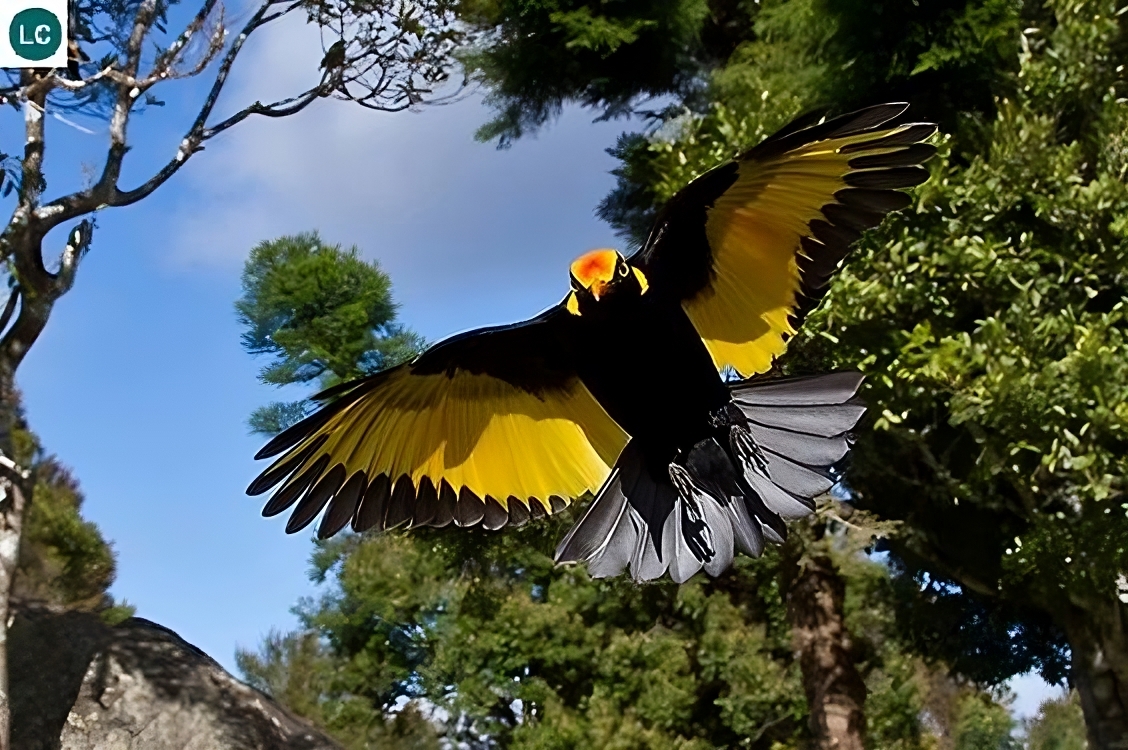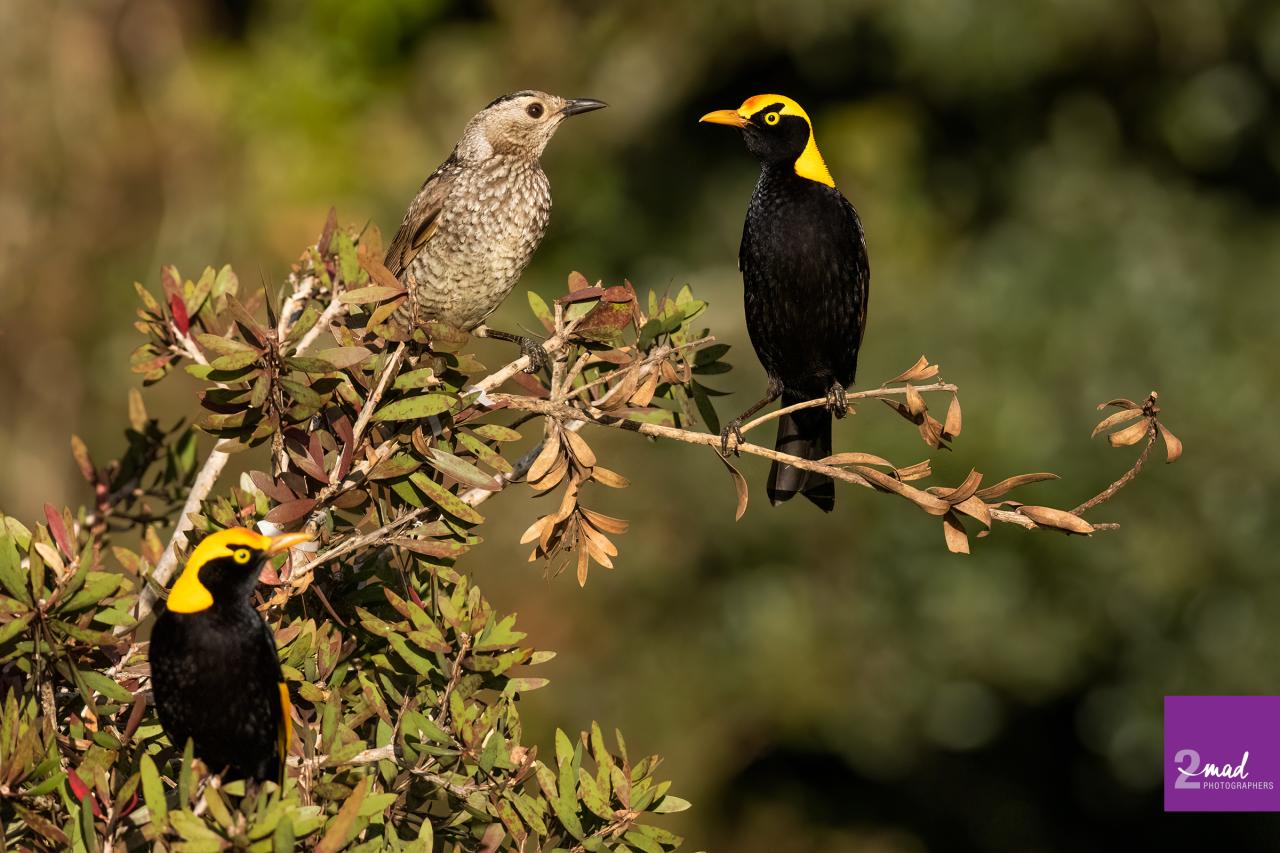The Regent Bowerbird (Sericulus chrysocephalus) is a captivating medium-sized bird native to Australia, exhibiting striking sexual dimorphism. The male, with its black plumage adorned by a brilliant golden-orange crown, mantle, and black-tipped wing feathers, is a sight to behold. Its yellow bill, black feet, and yellow iris add to its mesmerizing appearance. On the other hand, the female, while more subtly colored in brown with whitish or fawn markings, also possesses a unique allure with her grey bill, black feet, and crown. The bird’s name is a tribute to a former prince regent of the United Kingdom..

Distribution
Endemic to the Australasian biogeographical realm, the Regent Bowerbird thrives in the rainforests and margins of eastern Australia, specifically from central Queensland to New South Wales.

Habits and Lifestyle
One of the remarkable behaviors of the Regent Bowerbird is the construction of bowers, which are used to attract potential female mates. The male’s bower is a splendid avenue-type structure, meticulously crafted from sticks and adorned with shells, seeds, leaves, and berries. To enhance its allure, the male employs a fascinating technique of creating “saliva paint” by mixing muddy greyish blue or pea green substances in its mouth. Using wads of greenish leaves as tools, the bird carefully spreads this paint, a rare instance of tool usage observed in birds. In contrast, the female constructs her saucer-shaped nest, made of twigs, measuring about 30 cm in height and 15-20 cm in width, often placed away from the male’s bower.

Diet and Nutrition
The Regent Bowerbird is predominantly frugivorous and herbivorous, with its diet consisting mainly of fruits, berries, and insects.

Mating Habits
The mating behavior of the Regent Bowerbird involves polygyny and polygamy. The male bird builds its bower to attract multiple female partners. However, once the mating process is complete, the male does not participate in raising the young, leaving this responsibility to the female.

Population
Fortunately, the Regent Bowerbird is a common species throughout its range, and it currently holds the status of “least concern” on the IUCN Red List of Threatened Species.

In conclusion, the Regent Bowerbird is a captivating Australian endemic, known for its visually stunning appearance, elaborate bower-building behavior, and fascinating mating habits. Its remarkable use of “saliva paint” and tools makes it a unique and intriguing avian species, and its conservation status offers hope for the continued appreciation of this remarkable bird in the wild.